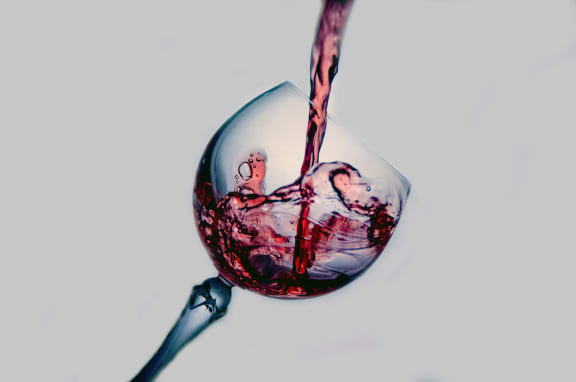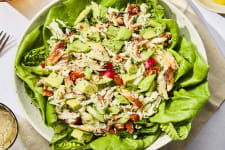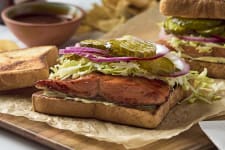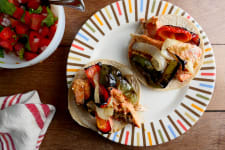Lean, mild, and firm wild Alaska pollock is a blank slate for a global range of flavors. When pairing wild Alaska pollock with wine, you’ll be matching your wine to the ingredients in the dish rather than the fish itself, giving you all kinds of creative culinary freedom.
Fried Wild Alaska Pollock
The one exception to this general advice is when you’re opting to fry wild Alaska pollock, in which case you want to focus your wine hunt on a bottle that cuts cleanly through the oil.
Wild Alaska pollock is a great fish choice for recipes that involve battering and frying since it’s firm enough to hold up to the high heat and hot oil. Along with Alaskan cod, wild Alaska pollock is one of many classic choices for fish and chips. Instead of serving your fish and chips with a crisp, effervescent beer, try a crisp, sparkling wine instead. A Spanish Txakolina, for instance, is super dry and refreshing without being too fizzy. It’s also relatively low in alcohol, hovering at around 11%, which makes it a great compliment to a casual meal.
If bubbles aren’t really your thing, a Pinot Grigio (or Pinot Gris) will go down easily and is an affordable, laid-back wine selection for this type of “pub food” inspired dish.
Baked Wild Alaska Pollock
Strips of wild Alaska pollock make for a fuss-free, lean protein in baked fish tacos. If you’re dressing up your tacos with spicy, citrusy garnishes — salsa verde, lime crema, fresh jalapenos, or even mango salsa — you’ll want to look for a Sauvignon Blanc from New Zealand, where the terroir brings out a more tropical expression of the grape.
Or, for a Mediterranean-inspired meal, wild Alaska pollock fillets baked in an herbed tomato, olive, and caper sauce pair well with a briny and dry Sicilian Grillo. The closer the grapes are grown to the sea, the more prominent the wine’s salinity.
Pan-Fried Wild Alaska Pollock
A simple pan-fry goes a long way when you build up richness and flavor with good-quality butter and whatever fresh herbs you have around. Wild Alaska pollock that has been drizzled in browned butter goes well with a dry white, but it also can match up with a more unctuous Chardonnay from France. Try to avoid Chardonnays from the West Coast of the U.S., unless you know it’s been aged in steel rather than in oak; oak barrels make for a creamy wine, which is not what you’re looking for in a pollock pairing, or most fish pairings for that matter.
Don’t be afraid, though, to try a slightly chilled red with pan-fried wild Alaska pollock. A dry Beaujolais is light in body and easy to drink. Plus, it’s low in tannins, which is a key factor if you’re pairing fish with reds; tannins in wine don’t jive with acidic components that tend to be a component with fish recipes — like a squeeze of fresh lemon juice — resulting in metallic or fishy flavors.
Grilled or Broiled Wild Alaska Pollock
Chances are high that if you’re grilling wild Alaska pollock, the weather is nice enough for you to be dining outside. If it’s winter and you’re looking for that nice char on your fish, a quick broil works too. No matter what flavors you use marinate your fillets before they hit the grill or what sauce you end up slathering on the fillets afterward, you can drink just about any dry to semi-dry rosé with your meal as long as the wine is nice and cold.
Even better for a wild Alaskan pollock cookout is a Portuguese Vinho Verde, which is bright and acidic, low in alcohol, and extremely affordable, making it an easy and breezy choice for a crowd.






